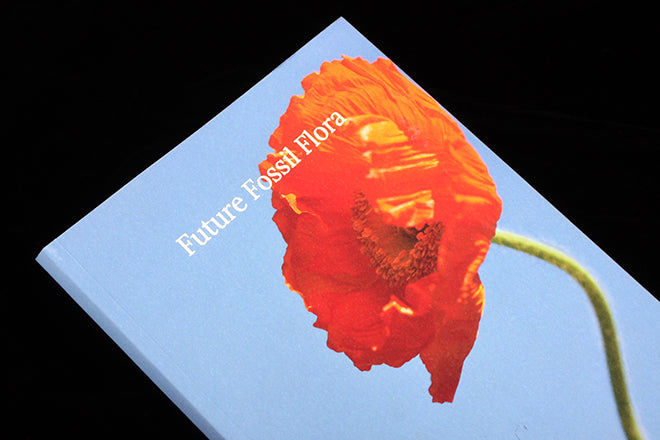
Future Fossil Flora #1
Future Fossil Flora studies one flower per issue, and so delved into the mutually curious relationship between humanity and flowers, seeking to find out about our modern relationship with each flower by looking at its history. This first issue explores our beautifully complex, and sometimes dangerous, relationship with the poppy. This is not a nature magazine, nor does it offer gardening tips, instead it invites you to think about representation, and how a flower can root itself in our consciousness, and come to embody so many different things.

Image from a series by Nona Flagstad Kvorning
Editor Kaley Ross describes her cleverly named magazine as a ‘modern botanical study’, meaning that it is a compilation of art and creative writing rooted in historic fact. The magazine is filled with beautiful images; artist Eleanor Meredith paints whispy, watercolour close-ups of petals, while Ross herself takes sun-drenched photographs of poppies against bright blue skies (as seen on the cover, top).

The issue is split into three chapters: ‘Poppy Petal Shades’, ‘Opium Dreams’ and, ‘Of Grief and Symbolism’, and these themes are explored through poems, first- person experiences, and short snippets of creative writing. In the first chapter, writers look at the connotations of different kinds of poppies. The pink poppy, while being delicate and beautiful, lends itself to something darker. Christine Butterworth-McDermott’s poem ‘Evelyn Nesbit As Pink Poppy’ (above), uses the dark eye of the poppy as a metaphor for Nesbit’s fate. Further on in the chapter, and somewhat contrastingly, Sharon Suzuki-Martinez celebrates the Mexican gold poppy, which she describes as an ‘avatar of enduring spirit – arising out of ashen earth like a sweet phoenix’ (below).
The second chapter offers more examples of the poppy’s relationship with death; it’s evocation of running blood, as well as its tendency for intoxication, unconsciousness, and its ability to transport you to another world. And the final chapter aptly studies the poppy after the First World War, and its role as an emblem of grief and hope. In some places, the poppies emerging from bloodied fields are callous; as Chloe Stoppa-Hunt puts it in her poem ‘Mercy’, ‘Let me go by you, Implacable/poppies flooding the meadows.’ In other parts, the presence of poppies is a soothing relief.

Image from a series by Daisuke Hamada
This first issue considers its subject in a fresh and exciting way, and forces us to think about the wider connotations of the things around us. Its use of creative writing is an interesting approach to the exploration of these ideas, and it will be great to see these early ideas develop under the guise of a different flower.



